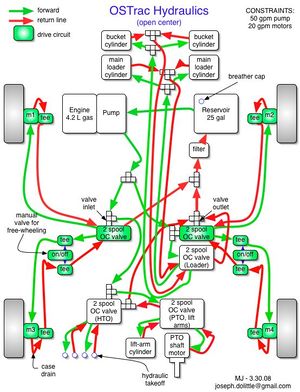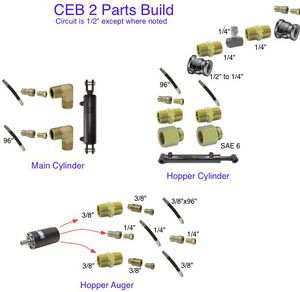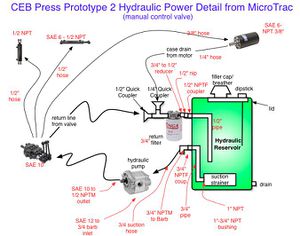Hydraulic Connection Diagram Standards: Difference between revisions
Jump to navigation
Jump to search
No edit summary |
No edit summary |
||
| Line 3: | Line 3: | ||
#paste in component images | #paste in component images | ||
#link connections via lines | #link connections via lines | ||
#label the | #use simple drawings to elucidate context | ||
#label the specifications of hydraulic components and fittings | |||
#use [[OSE Title Block]] | #use [[OSE Title Block]] | ||
[[Image:Ostrac_hydraulics.jpg|thumb|Sample Conceptual Diagram without images of parts. Sufficient but does not provide the builder with a visual understanding of parts used.]] | [[Image:Ostrac_hydraulics.jpg|thumb|Sample Conceptual Diagram without images of parts. Sufficient but does not provide the builder with a visual understanding of parts used.]] | ||
[[Image:CEBhydbuild.jpg|thumb|Example with pictures.]] | [[Image:CEBhydbuild.jpg|thumb|Example with pictures. Best example for physical build clarity.]] | ||
[[Category:Standards]][[Category:Hydraulics]] | [[Category:Standards]][[Category:Hydraulics]] | ||
[[Image:Hydtankdiagram.jpg|thumb|Example with pictures and specifications, without pictures of fittings.]] | |||
Revision as of 13:48, 25 August 2012
To draw a hydraulic diagram:
- use a vector graphics program such as Inkscape or a cut and paste program Google Drawings
- paste in component images
- link connections via lines
- use simple drawings to elucidate context
- label the specifications of hydraulic components and fittings
- use OSE Title Block


